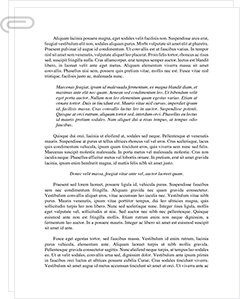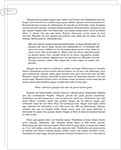 Study Document
Study Document
Paper Related to Yellow Fever in South Africa Paper
Pages:4 (1241 words)
Sources:10
Document Type:Paper
Document:#30245896
I. Define the problem (nature, extent, significance, etc.).a. Yellow fever in South Africa and how to mitigate its influence within the countryII. Describe the agent.a. The agent is yellow fever and the conditions that cause the spread of the disease. These agents are environmental conditions, lack of healthcare infrastructure, and improper mitigation effortsIII. Describe the condition (briefly).a. Yellow fever is hemorrhagic disease that causes jaundice. Here the characteristics are yellow skin and yellow eyes. In addition, the conditions of the disease can vary by individual. Initially, the conditions are headache, fever, muscle pain, nausea and appetite. If left untreated these conditions can be more severe in roughly 7 days. These symptoms included higher fever, liver failure, kidney failure, internal and external bleeding. During this phase nearly 50% of individuals die. The condition is primary transferred by infected mosquitos.IV. Examine the above sources for data on morbidity and mortality in the selected health problem.a. The mortality rate of most individuals that go untreated is 50%. Is treated with 1 to 5 days the mortality rate significantly declines to roughly 20%.V. Summarize these data on the distribution of the selected health problem according to the following factors using tables, graphs, or other illustrations whenever possible:A. Host characteristics1. Agea. Most individuals with Yellow Fever vary in age. As the condition is contracted by mosquitoes the age distribution of yellow fever victims is primarily associated with those exposed to mosquitos. These individuals tend to be working class between the ages of 25-64.2. Sexa. Yellow fever is evenly distributed between men and women3. Nativitya. According to the World Health Organization, Yellow fever originated in Africa and was transferred to the rest of the world during the slave trade.b. The first widespread epidemic occurred in 1648 within the Yucatan.c. The virus would later spread throughout the Caribbean, south American and other tropical regions.4. Marital statusa. Marital status has no bearing on the spread of yellow fever.5. Ethnic groupa. Africans, Brazilians, Peruvians, and Argentinians are the most likely ethnic groups to contract the virus.B. Environmental attributesa. The virus typically survives in lush tropical environments.b. A large source of water is required for the spread of the virus. This is indicated through the data as many of the yellow fever hot spots are located within coastal areas.c. The environment typically has low infrastructure related to healthcare care and proper treatment. In this environment, the symptoms must be easily recognized and then treated promptly for survival rates to increase.1. Geographic areasa. The virus…
…the distribution of the virusC. How improvement of infrastructure and availability can help mitigate or even eradicate the virusVIII. Suggest areas for further epidemiologic research.a. How can the onset of another pandemic such as COVID-19 impact the yellow fever infection rates in South Africa?IX. Critically appraise the data as a whole; consult primary sources and important original papers1. Biraud Y. Present-day Problems of Yellow Fever Epidemiology. League of Nations Monthly Epidemic Report, 1935; 14(179): 103-1732. Durieux C. Mass Yellow Fever Vaccination in French Africa South of Sahara. In: Smithburn KC, Duriex C, Koerber R, Penna HA, Dick GWA, Courtois G, de Sousa Manso C, Stuart G, Bonnel PH. YF Vaccination. Monograph Series No 30. Geneva: WHO, 1956: 115-121.3. Hobson W. World Health and History. Bristol: Wright, 19634. Peters W, Gilles HM. Color Atlas of Tropical Medicine and Parasitology. London, UK: Mosby-Wolfe, 1995; 4-95. Rickard ER. Organization of Viscerotome Service of Brazilian Cooperative Yellow Fever Service. Am. J. Trop.Med. 1937; 17: 163.6. Strode GK, Bugher JC, Austin-Kerr J, Smith HH, Smithburn KC, Taylor RM, Theiler M, Warren AJ, Whitman L, editors. Yellow Fever. New York, McGraw-Hill Book Company, Inc. 1951. 13.7. Mims CA, Playfair JH, Roitt IM, Wakelin D, Williams R, Anderson RM. Medical Microbiology. London, UK: Mosby, 1995:…
Related Documents
 Study Document
Study Document
Colonization of Africa: The Occupation
Imperialism and African Colonization: Imperialism is empire building and occurs when one state is more powerful than the other state's obstacles (such as peoples, geographic obstacles, physical obstacles and technological obstacles) to expansion. Imperialism became a popular cause for the first time in Western countries in the 1890s due to a significant degree by propaganda that sought to make nationalism and imperialism popular (Pieterse par, 2). Towards the end of the
 Study Document
Study Document
Current Situation of Children and Child Labor in Liberia and Sierra Leone...
Children and Child Labor in Liberia and Sierra Leone Two of the world's most beautiful countries are also, unfortunately, the poorest as well. The nations of Liberia and Sierra Leone are faced with a number of severe obstacles in their quest to join the international community and diversify their stagnated and monolithic economies; while much remains to be done, some progress has been made. In this regard, a brief overview
 Study Document
Study Document
Health Care the Black Plague
What might have otherwise been individual illness, limited to one or two cases of Ebola, was magnified in a hospital setting in which unsterile equipment and needles were used repeatedly on numerous patients." (Garrett 220). Even with the significant accomplishment of learning to genetically engineer biologic material, the means did not exist to apply this new knowledge where it was needed most. Economic, social, governmental, and geographic barriers prevented this
 Study Document
Study Document
West Nile Virus
West Nile Virus In recent years, every summer, the threat of West Nile (WN) virus has become the scourge of the temperate regions of Europe and North America. (Abramovitz, 2004) The virus presents a threat to the human and animal population -- especially the bird population. Symptoms of WN viral infection range from mild fevers and aches, to encephalitis (inflammation of the spinal cord and brain). The latter can be fatal.
 Study Document
Study Document
Dtt Yo the Chronology of
The unfortunate thing is that these methods have rarely been applied in places such as Africa for along time (Killeen et al.,2002). It is worth noting that the effective of Indoor Residual Spraying (IRS) with DDT or any other suitable alternative when compared with other control techniques for malaria ( such as impregnated bed nets as well as improved access to anti-malarial drugs) shows great variation and is dependent on
 Study Document
Study Document
Senegal Prior to Ordering Meat
" There is also a problem with deforestation, overgrazing, soil erosion and over-fishing, and because of the clear-cutting of forested areas in Senegal, a process of "desertification" is well underway. The problem of desertification is significant because according to United Nations' information (Thompson Gale / Nations Encyclopedia) 46% of Senegal is classified as semiarid. There has been "inadequately controlled cutting of forests for fuel" and there has also been significant




